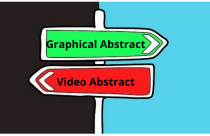Cartoon Abstracts: Visualizing Academic Research

Cartoon abstracts are a new way of promoting research articles. These colorful cartoon strips were launched by Taylor & Francis in 2015 and summarize the contents of a paper in a fun way. The idea behind the invention is to encourage more people to read research articles—even those outside of academia. This novel approach has been very well received and has even won the 2016 Association of Learned and Professional Society Publishers (ALPSP) Award for Innovation in Publishing.
Powerful Illustrations
With so many research papers being published daily, it is getting more difficult to stand out from the crowd, so authors, editors, and publishers are interested in finding new ways to draw attention to their articles. Images are a great tool when it comes to attracting people’s attention, and this is also true for research papers. According to Taylor & Francis, cartoon abstracts have already generated more than 11000 extra downloads for articles published in their journals.
The powerful illustrations transcend language barriers and present complicated research findings in a simple, fun way, making them more appealing to the readers. They help people to understand the focus and key findings of academic papers and also have a great potential to reach young researchers and the wider public.
The cartoons can be easily shared through social media or by e-mail, thus, increasing the reach of the work. Audience engagement is further encouraged by including elements of humor and parody in most pictures. Printed versions of the comics can also be used in poster sessions or as popular conference giveaways.
Reactions
Overall, the reactions are quite positive. Many researchers say that they have seen an increase in the number of readers for their articles after the cartoon abstracts were published. But the idea has also been criticized by others who believe that cartoon abstracts underestimate the reader’s visual literacy and widens the gap between visual and verbal components by limiting the illustrations to the abstract.
Despite this criticism, these fun pictures do seem to be an innovative marketing tool—and an exciting new way to communicate research.







